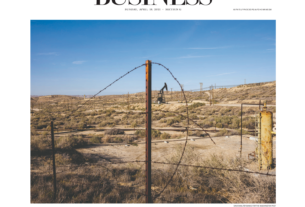
Seventeen people were killed in disaster that caught residents off-guard
MONTECITO, Calif.—The sun emerged here a day after mudslides killed 17 people and destroyed 100 homes, illuminating the massive scope of an unfolding disaster that caught many residents off-guard.
Rescue workers on Wednesday continued searching for at least 17 missing people, and worked to reach dozens more trapped in homes surrounded by walls of mud.
Of 1,200 people given mandatory evacuation orders in the Montecito area, only 200 heeded the warning to leave, said Shawn Boyd, a spokesman with the California Governor’s Office of Emergency Services, citing preliminary information.
“They all decided they didn’t want to go,” he said.

Mr. Boyd said at least 15 of the dead were recovered in the mandatory evacuation zone, but it wasn’t clear if all who died lived in those areas.
In the broader county of Santa Barbara, 7,000 people were in areas requiring mandatory evacuation and 23,000 were in voluntary evacuation zones, said a spokeswoman for the Santa Barbara County Sheriff’s office. A significant number of people chose to stay put, the spokeswoman said, declining to confirm specific numbers in the area in and around Montecito, which was hardest hit.
Even for those accustomed to preparing for the familiar California pattern of drought, fires, and floods, the death toll and destruction were unexpected. Officials said that was explained in large part by the decision of many not to evacuate.
Montecito, an unincorporated neighborhood in Santa Barbara County best known for the wealthy executives and celebrities who own homes there, wasn’t entirely under mandatory evacuation orders. Some neighborhoods were under voluntary guidelines.
Officials had issued persistent warnings and calls for evacuations in the days leading up to the mudslides. The state’s worst wildfire had scorched the earth just weeks earlier, leaving the hillsides vulnerable to mud slides after heavy rains.
Montecito had been spared the brunt of that wildfire, leading some residents to believe the community was safe from the next disaster.
Many said they were surprised by the speed and force of a catastrophe.
“The depth of tragedy is soaking in,” said Jacqueline Rubasky, a Montecito resident organizing community relief efforts.
As names of people still missing circulated within the community, so did stories of survival.
A real-estate agent was found hanging from a tree branch, alive, many hours after his partner had assumed the worst. A lawyer trapped inside his home without power for eight hours reconnected with frantic friends after rescue workers—plowing street through street and then door to door—cleared the area and pried open his door.
The mandatory evacuation line wove in and out of some neighborhoods, so some homes may have straddled evacuation zones, which are drawn up by law-enforcement officials.
County officials said they made clear in door-to-door visits who was ordered to evacuate and who was simply recommended to leave, shifting the burden of choice to individuals.
The evacuation zones raised questions over why the entire area wasn’t under mandatory evacuation orders.
Mike Eliason, a spokesman with the Santa Barbara County Fire Department, said preparation for floods after major fires usually involves ground assessments that take between one and two months to complete.
“We didn’t have that time,” Mr. Eliason said in an interview. “It was more like a week of time.”
As helicopters airlifted people off rooftops and elite rescue teams dug into rubble, listening and looking for signs of life, Mr. Eliason called it the worst aftermath of a mudslide he had seen in over three decades on the job.
“This situation is definitely a worst-case scenario when it comes to this kind of mud-flow, debris and damage…how many people were affected in such a short order,” Mr. Eliason said.
Officials estimate the mudslides and tumbling debris destroyed 100 homes and damaged 300.
Daniella Johnson, 51, lives on the cusp of the mandatory evacuation zone and decided Monday not to leave her home. Ms. Johnson wasn’t sure at first whether she was under mandatory evacuation orders or not.
So she called an information hotline and was told her home lay inside the mandatory zone, but she chatted with neighbors and decided to stay put.
The Johnsons thought the hill behind their home would protect them. It did, but they have been trapped at home since, with mud and debris clogging surrounding streets.
“I had a hill behind me that I wanted to watch, it was stupid,” Ms. Johnson said in retrospect. “It was really stupid.”
Ms. Johnson had seen the worst of nature before. Her home burned down in a 2008 fire, and California’s worst fire on record, last month’s Thomas Fire, nearly burned down her home once again.
She marveled at surviving the mudslides, but still called it “a disaster of biblical proportions….No one could fathom it could come down like this.”

